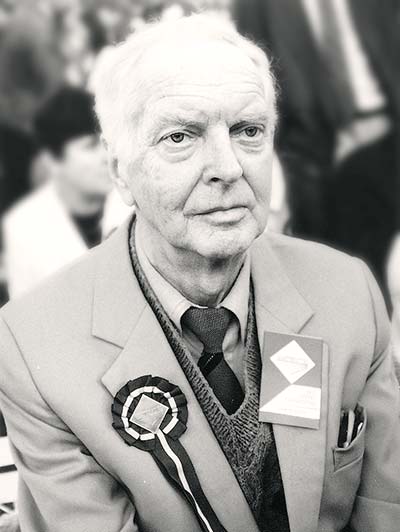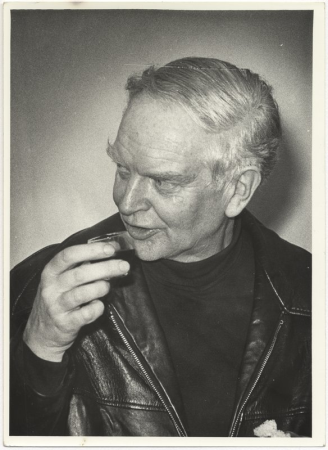Harijs Sūna
1923–1999
Choreographer, academic, educator
One of the most outstanding and versatile Latvian personalities in the 20th century dance genre.
Born 23 March 1923 in Sigulda Parish. Graduated from the Latvian State University, Faculty of Architecture. Then studied at the A. Lunacharsky State Dramatic Art Institute in Moscow (1960–1964), including with the famous choreographer Igor Moiseev.
His interest in the folk-dance genre arose when still a student and developed into a lifelong love. While still an architectural student, Sūna founded and led several dance groups, including the Latvian State University central dance group (later the Dancis folk-dance group) (1946–1963), which achieved considerable success in competitions: under Sūna’s directorship, winning a bronze medal at the 1957 Moscow International Students’ and Young People’s Festival, but a silver medal in the All-Union review. Well-known Latvian dance-group directors such as Uldis Šteins, Imants Magone, Vairis Ceimers, Baiba Šteina and many others have trained in Dancis under Sūna.
In 1959, began working at the Institute of Language and Literature of the Latvian Academy of Sciences, first as a research associate, then as a Candidate of Arts (1968) and a Doctor of Philology (1987). His interests include Latvian folk dance, its history and development, which resulted in fundamental editions of Latviešu rotaļas un rotaļdejas (Latvian Dancing Games, 1966), Latvian Customs in Choreographic Folklore (1989), Latvian Social Choreography (1991) and other publications. At the same time, also worked in dance methodology and engaged in dance notation, creating a typology system for Latvian traditional dance, with the help of which all choreographic activities can be arranged. The system is described in the book Dance Notation (1979).
Sūna is one of the most prolific (about 100 original choreographies and arrangements) and best-loved choreographers – over 12 Dance Celebrations, he created 63 arena-dance choreographies for both Latvian and non-Latvian dances. 27 of his original choreographies have been danced during Celebrations, some of them numerous times, for example, Audēju deja (Weaver’s Dance), Piebaldzēni, Pie Daugavas (By the Daugava), Jūra sauli vizināja (The Sun Shimmered over the Sea) and others.
Sūna’s powerful personality influenced the dance style of the amateur dance movement. As early as the end of the 1940s, he was actively involved in the choreography section of E. Melngailis Folk Art Centre as a consultant, leading seminars and participating in the work of juries.
The number of students he taught, working at the Jāzeps Vītols Latvian Academy of Music as an educator of folklore and dance (1977–1998), runs into the hundreds.
A Chief choreographer at the 4th and 7th-11th Dance Celebrations, Honorary Chief choreographer at the 12th Dance Celebration, a Chief choreographer at the 1st-6th Latvian Schools’ Song and Dance Celebrations, as well as for Saldus, Kuldīga, Ogre, Ērgļi and Rīga Moscow district (now Latgale suburb) dance groups.
Latvian SSR Order of Honour for Cultural Contribution (1957), Officer, Order of the Three Stars (1995), Milda Lasmane laureate of the Latvian Dance Association (1990).




